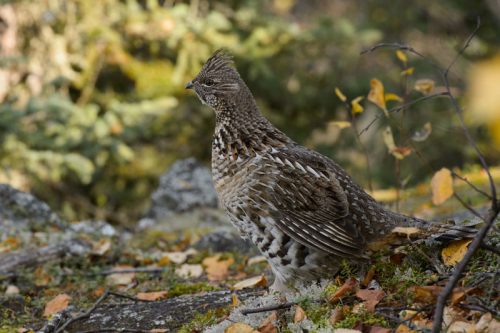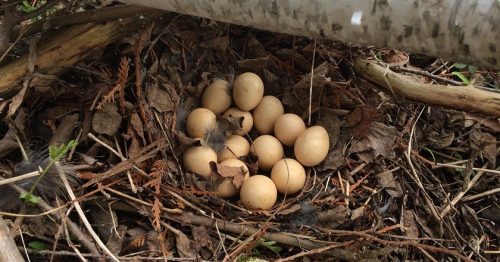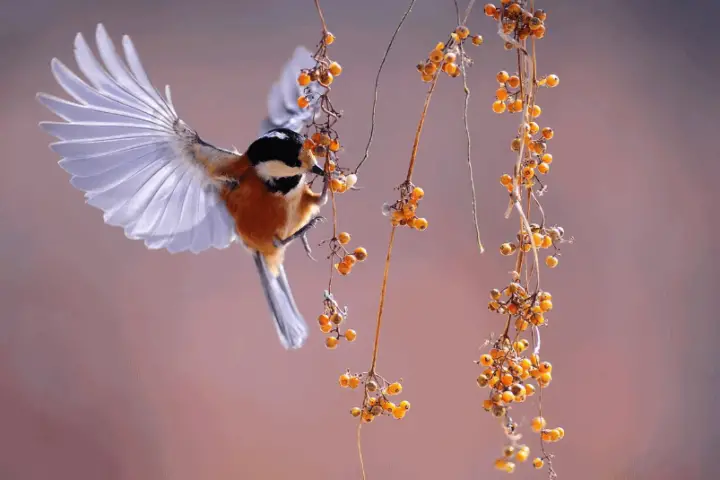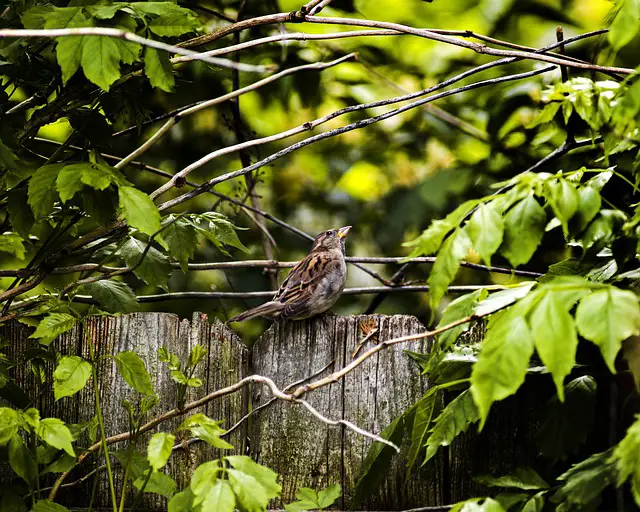The ruffed grouse (Bonasa umbellus) is a medium-size non-migratory bird that typically breeds from Alaska to Canada. It is also the national bird of the state Pennsylvania, United States. Ruffed grouse is further classified into 14 subspecies. The grouse has got the loudest of the drumming sounds. It is thought to make habitats in woodlands. The global population of ruffed grouses is 18,000,000.
Ruffed Grouse Facts
Anatomy
- Adult ruffed grouses have an unmistakable physical appearance in that they have tufts of black feathers around their neck. It is most prominent in males and these feathers finally gave this bird a name.
- Males reach a length of about 43 – 50 cm while females are 40 – 37 cm long.
- Adult males weigh up to 500 – 750 grams and females averaging 450 – 600 grams in weight.
- The ruffed grouse’s wingspan measures about 19.7–25.2 in (50–64 cm).
- It has mottled greyish brown plumage but it goes lighter at the belly and breast.
- The ruffed grouse possess a square tail and a ragged head crest.
- They lack hair at the grey-blue feet.
- Ruffed grouses are able to walk quite comfortably on snow and on icy branches.
- Both males and females are similar in plumage.
- It is nearly the size of an American crow.

Range & Habitat
- Ruffed grouses are native birds of United States and Canada. They have been introduced in the north-western Atlantic Ocean as well as in Miquelon and Saint Pierre islands.
- Grouses are thought to breed along the central Alaska, northwestern Minnesota, and northern Georgia.
- They typically make homes in a wide variety of habitats such as temperate forests, deciduous forests, montane and boreal forests. The ruffed grouse’s habitats must be abundant in mixed woodland and is dominated by poplar, birch, and aspen.
- The southern population seems to prefer mixed hardwood for example hickory and oak. They fell home in thick forests but small tree holes nevertheless offer much to the ruffed grouses.
- Ruffed grouses also occupy shrubby pastures, wetlands, and orchards.
Behavior
- Ruffed grouses are permanent residents but they are expert fliers. It will spend much of its daylight hours on the ground.
- They prefer to walk on the ground instead of flying. Grouses will only fly when they are provoked. Thus they make a fairly short flight.
- Males become noisy during the courtship display. It involves drumming Their thumping sound is so loud that it can be heard at a distance of about quarter of a mile.
- Grouses will utter sounds like whining or clucking when they are alarmed. They also produce other sounds such as peeping, hissing, and
Feeding Ecology & Diet
- Ruffed grouses have an omnivorous diet as they mainly eat seeds, leaves, woody plants, fruits of ferns, insects, and buds. The bird also relies on many other invertebrates.
- The ruffed grouse’s diet consists of aspen catkin buds, mountain ash, birch, dogwood, clover leaves, and poplar.
- During spring grouses will consume dandelions, trees, shoots of plants, and shrubs. They also feed on blueberries and blackberries. Young grouses eat spiders and small insects.

Reproductive Biology
- The breeding season occurs in April and May. At other times if the grouse drums then it’ll probably try to defend its territories.
- The male leaves immediately after mating while females claim the responsibility of rearing the chicks. She does not only rear a chick but also she builds a nest on the ground. The nest is usually lined with dry leaves and pine needles.
- The ruffed grouse’s nest measure 6 inches across with the depth averaging 3 inches.
- The female camouflages the nest using low vegetation in a fallen log or tree.
- The clutch size is about 9 – 12 buff-colored eggs. Eggs measure 5–1.6 in (3.78–4.14 cm).
- Chicks may feed themselves 24 hours after hatching. They show sandy brown down at birth.
- The incubation period lasts 24 days.
- Chicks fledge out in about 12 days.
- Predators of the ruffed grouses include goshawk, great horned owl, and many other birds of prey. Prominent among mammals are bobcat and fox.





